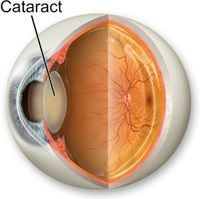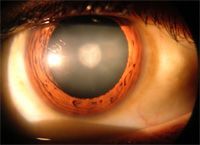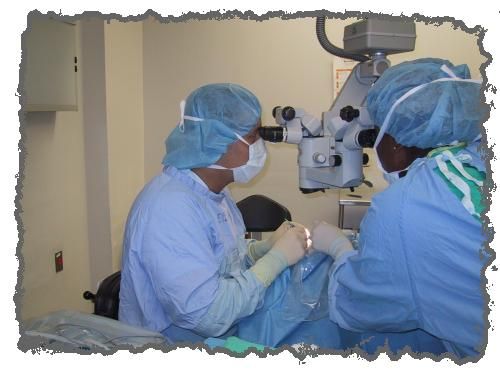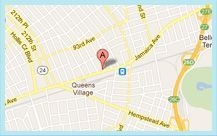
Cataract Overview
WHAT IS IT?
If you think of the eye as a camera , there is a lens in the eye which does the work of focusing the image on to the retina (the sensitive inner layer of the eye ball akin to the photographic plate). This lens is normally clear but due to age or other reasons it can become cloudy thereby not forming a clear image and causing blurred vision. This cloudy lens is called a cataract.

WHO GETS IT?
Generally elderly people, but some times younger people and rarely new -born babies can get it as well.
WHY DOES ONE GET IT?
The commonest kind, old age cataract is due to age related changes. The new- born get it due to genetic abnormality or infection during pregnancy. Young people can get it due to injury, Inflammation, diabetes etc.
WHAT ARE THE SYMPTOMS?
Blurred or cloudy vision, change in spectacle prescription, glare in bright light or while driving, double vision etc.
CAN I DO SOMETHING TO PREVENT IT?
Not really, but multivitamin and antioxidant supplements in earlier age may delay the onset. So also reducing exposure to UV light may be beneficial.

CAN IT BE TREATED?
Yes, very successfully by removal of cataract and implantation of an artificial lens implant.
CATARACT SURGERY
In developed countries it is usually done by using sophisticated equipment. (phaco emulsification). The cataract is broken down and emulsified with the help of ultrasound and sucked out through a small opening and an artificial lens implant is introduced in its place.

Stitches are generally not required. This is also known as keyhole surgery. Normally this is done under a local anesthetic and a day case procedure. The patient normally remains awake and lying down during the 15 to 30 minute procedure. The other (older) technique involves a bigger incision and removal of the cataract without emulsification. An artificial lens implant then may or may not be put in and stitches are used to close the wound.

Dr Laroche (left), assisted by a nurse (right)
performs combined glaucoma and cataract surgery on a patient
ARE THERE ANY RISKS OR LIMITATIONS TO SURGERY?
Yes, the artificial lens implant can not change focus like the natural lens and therefore use of spectacles may be necessary. Complications can occur during or after the surgery, and the sight can be reduced or even lost in very few cases due to hemorrhage or infection. Overall it still is a very successful procedure with excellent results.

Contact Us
We will get back to you as soon as possible.
Please try again later.

Manhattan Office

Queens Office

Navigation

